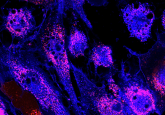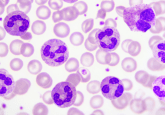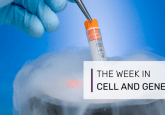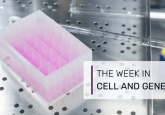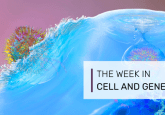Industry updates with Dusko Ilic: November 2022

Read highlights from the latest installment of Dusko Ilic’s industry news, which discuss the latest developments and news in regenerative medicine and stem cell research, and are published every month in Regenerative Medicine.
Every month, Dusko comments on the regenerative medicine industry news of note. Read the full update for November 2022 in Regenerative Medicine here >>>
What happened this month that you were expecting?
Cell sorting finally sorted
Human pluripotent stem cells (hPSCs), both embryonic and induced pluripotent (hESC/iPSC), are inherently sensitive cells to mechanical stress, a feature particularly evident when these cells are isolated and dispensed as single cells to establish clonal cell lines. The inefficiency in single-cell cloning has created a major obstacle to using hPSCs in cell and gene therapy, which requires stable gene editing and subsequent single-cell cloning. It seems that Namocell (CA, USA), a Bio-Techne Corporation Company (MN, USA), has sorted the issue with their Namocell™ Single Cell Dispenser.
What happened that (kind of) surprised you this month?
New MSC panacea
Last month I highlighted Therapeutic Solutions International (ID, USA) and their spin-off Res Nova Bio for their unverified claims that their StemVacs-V product stimulates the immune system to selectively kill blood vessels that feed the tumor but not healthy blood vessels. This month, Therapeutic Solutions International launched a spin-off company, Breathe Biologics, to commercialize the use of their Jadi cells (mesenchymal stromal/stem cells) in the treatment of chronic obstructive pulmonary disease (COPD). A few weeks later, the company announced improvements in patients with autism, Amyotrophic Lateral Sclerosis, and Schizophrenia following injection of Jadi cells. We should not forget that another Therapeutic Solutions International spin-off, “suicide prevention company” Campbell Neurosciences, is using Campbell cellsTM, allogeneic primed MSCs, for the treatment of bipolar disorder and Schizophrenia.
I hope that the potential patients and/or participants in those trials would read first at least some of Leigh Turner’s papers about direct-to-consumer marketing [1,2], pay-to-participate clinical studies [3], and US businesses selling unlicensed and unproven stem cell interventions [4,5].
If we only read about one story this month, what should it be?
Clinical proof of concept for in vivo genome editing
Editas Medicine (MA, USA; www.editasmedicine.com), a clinical-stage genome editing company, has announced clinical data from the Phase 1/2 BRILLIANCE trial of EDIT-101, an in vivo CRISPR-Cas9 genome editing medicine. EDIT-101 is a CRISPR-Cas9-based experimental medicine under investigation for the treatment of Leber congenital amaurosis 10 (LCA10, a CEP290-related retinal degenerative disorder), by deleting the IVS26 CEP290 mutant allele. EDIT-101 is administered via a subretinal injection to reach and deliver the gene editing machinery directly to photoreceptor cells. EDIT-101 has been granted Rare Pediatric Disease and Orphan Drug designations from the U.S. FDA and Orphan Medicinal Product designation from the European Medicines Agency (EMA).
Since LCA10 patients homozygous for CEP290 IVS26 mutation represent an estimated population of approximately 300 in the U.S., the Company will not progress this program independently and will seek to identify a collaboration partner to continue the development of EDIT-101. As a result, Editas Medicine is pausing further enrollment in the BRILLIANCE trial and will continue long-term follow-up of all patients who have been treated to date.
Fingers crossed that they find a partner and can help more people affected by this debilitating disease.
Dr Dusko Ilic
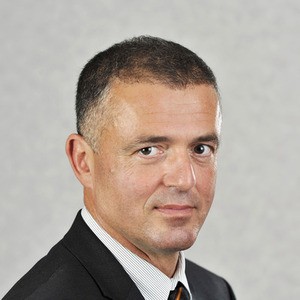 Dusko Ilic (left) is a Senior Lecturer in stem cell science, coordinator of the cross-divisional postgraduate program in stem cells and regenerative medicine, and Head of the Induced Pluripotent Stem Cell Core Facility at King’s College London (London, UK). He is also Head of the Assisted Conception Unit’s Human Embryonic Laboratories at Guy’s Hospital (London, UK). He is also a member of the editorial board of the journal Regenerative Medicine, where he writes the Industry Report, a regular feature compiling information from non-academic institutions in the field of stem cells and regenerative medicine.
Dusko Ilic (left) is a Senior Lecturer in stem cell science, coordinator of the cross-divisional postgraduate program in stem cells and regenerative medicine, and Head of the Induced Pluripotent Stem Cell Core Facility at King’s College London (London, UK). He is also Head of the Assisted Conception Unit’s Human Embryonic Laboratories at Guy’s Hospital (London, UK). He is also a member of the editorial board of the journal Regenerative Medicine, where he writes the Industry Report, a regular feature compiling information from non-academic institutions in the field of stem cells and regenerative medicine.
